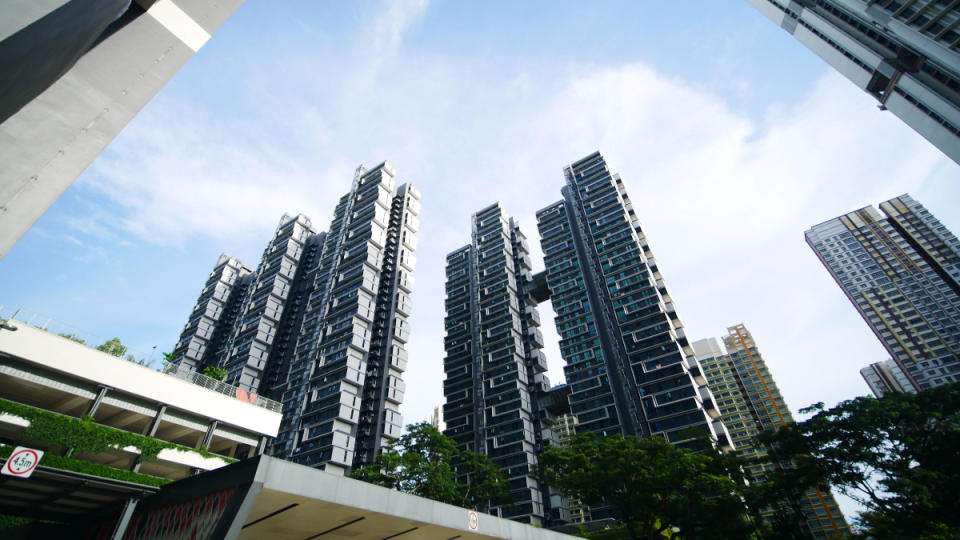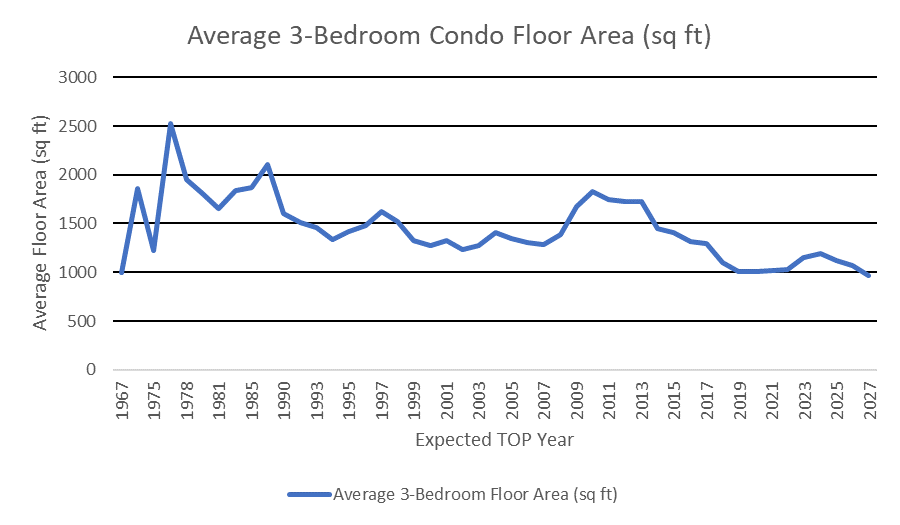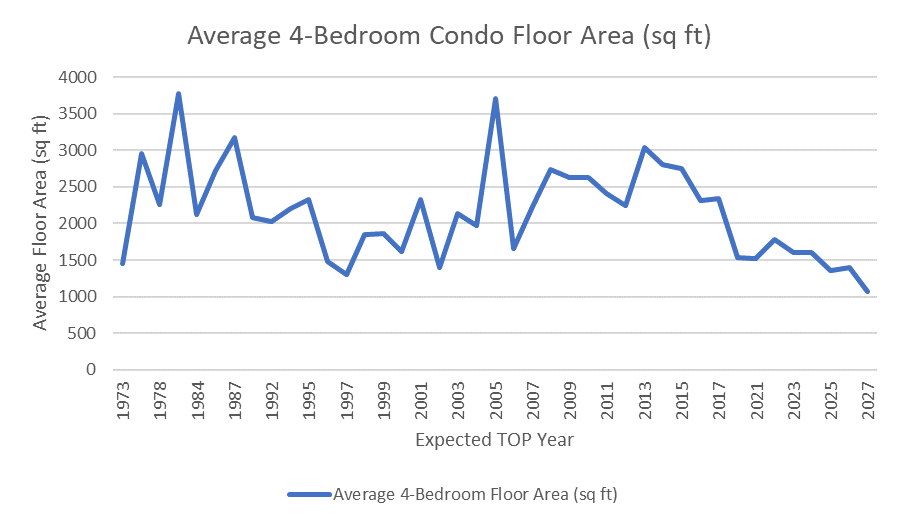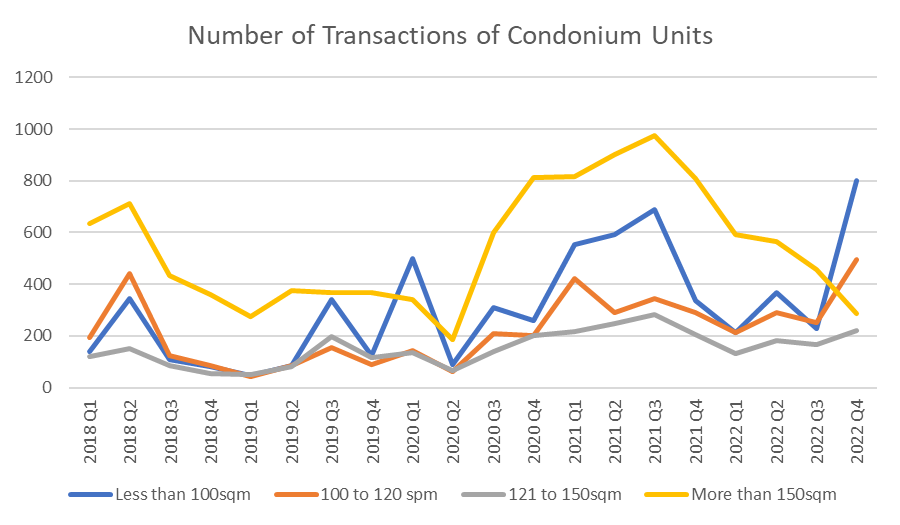Just How Much Smaller Are New Condos and HDB Flat Sizes Getting?

Over the years, Singaporeans have been getting the feeling that condo units and HDB flat sizes are shrinking. Living rooms don’t seem as spacious as they used to be, and bedrooms nowadays seem to be able to hold little more than a single bed.
In post-pandemic Singapore, the appetite for larger homes seems to endure with more preferring spacious abodes, even at the expense of a more central location.
So, how have home sizes evolved over the years and are they aligned with the housing hopes of Singaporeans? And given the fact that fewer people are willing to put up with minuscule homes these days, should we be worried? Let’s find out.
How Big Are HDB Flat Sizes? 80s, 90s, 00s Vs Now
If you remember tearing through cavernous HDB flats and marvelling at double-storey maisonettes as a child, the seemingly compact size of new flats can be underwhelming. But are HDB flat sizes really shrinking?
The government says no. In 2012, then-National Development Minister Khaw Boon Wan claimed that HDB flats had remained the same size for the past 15 years. While that is technically true, things are a little more complicated.
According to research compiled by Teoalida, the average size of each flat type has stayed more or less the same over the years. For instance, 4-room HDB flat sizes have stayed fairly consistent at about 80 to 100 sqm, with just a slight dip over the past two decades.
More precisely, a 4-room HDB flat size in 2000 was about the same as one built in 2010. 4-room HDB flat sizes measured approximately 95 sqm in the mid-80s, reached a peak in the mid-90s at just under 110 sqm, and fell to a little over 95 sqm in the mid-2010s.
A similar change can be seen with 5-room HDB sizes, which were slightly under 130 sqm in the mid-80s and mid-90s and fell to about 115 sqm in the mid-2010s.
However, what has changed most is the mix of flat types on the market. 4-room HDB flats used to be the smallest flat type in the past. Today, 4-room HDB flats are the average flat type, with smaller flats such as 2-room Flexi and 3-room flats skewing the average size downwards.
This is a logical result of smaller household sizes, with families having fewer kids and more single or childless households. A predilection for smaller flats could also be due to higher property prices, which pushes households to buy smaller and more affordable homes.
Because of these changes, the average HDB size overall reached a peak in the 90s at about 130 sqm, before dipping to about 90 sqm in the mid-2010s.
How Big Are Condos in Singapore?
Now, what about condo sizes? The median size of new condos in Singapore has shrunk over the last decade. The average size of condo units in suburban areas has fallen from 116 sqm in 2007 to 71 sqm in 2020.
For instance, units at Forett at Bukit Timah measure from about 44 to 175 sqm. By contrast, Goodluck Garden, the condo that previously occupied Forett at Bukit Timah’s site on Toh Tuck Road before being acquired in an en bloc sale, had units ranging from 95 to 182 sqm.
Dr Lee Nai Jia, Head of Real Estate Intelligence, Data and Software Solutions, PropertyGuru Group confirms that a downward trend for the size of 3- and 4-bedders has been observed on the PropertyGuru website.
“The average size of active listings on the PropertyGuru website for 3-bedders started decreasing in 2010. Meawhile, the size of 4-bedders has been declining steadily since 2013.”


Why Are Condos in Singapore Becoming Smaller
In addition, developers are building more studio, one- and two-bedroom condo units in response to demand from singles and smaller households with fewer or no children.
According to SingStat, the average household size staying in a condominium in Singapore is 3.11 in 2021, down from 3.42 in 2013. This may have influenced the demand for larger condominium units.
Smaller condominium units also cater to the investor group: smaller units also enjoy much stronger demand on the rental market than they did two decades ago due to the high number of foreigners working in Singapore. Such units are also more profitable for developers as they command a higher psf price.
Dr Lee corroborates this, “On the supply side, land and construction costs have been increasing. Therefore, developers are reducing the sizes of the units to keep the quantum palatable to buyers. For that reason, layouts of newer condominiums are becoming more efficient, with less wastage of space compared to the older condominiums.”
While the Urban Redevelopment Authority has put in place regulations on the number of units that can be built on each plot of land, smaller condo sizes are here to stay due to Singapore’s demographic changes over the past few decades.
Is There A Growing Demand for Larger Homes?
Competition has traditionally been stiffer for centrally-located homes in prime districts (where properties are smaller), but the COVID-19 pandemic appears to have caused an enduring shift in consumption patterns.
The demand for bigger houses surged and remains strong. The record number of million-dollar HDB flats transacted in 2022 and buoyant HDB resale flat prices is a testament to this. Buyers are willing to pay premiums for larger flat types, even if they are not centrally located.
But it seems that the reverse is true for non-landed private property. According to Dr Lee, “In recent years, the number of transactions for units larger than 150 sqm has come down while the number of transactions for units that are less than 100 sqm and those that fall in the range of 100 to 120 sqm went up significantly.”

“As interest rates continue to increase, we may see more buyers becoming more quantum-sensitive, shifting their targets to smaller units to fit their budgets.”
For more property news, content and resources, check out PropertyGuru’s guides section.
Looking for a new home? Head to PropertyGuru to browse the top properties for sale in Singapore.
Need help financing your latest property purchase? Let the mortgage experts at PropertyGuru Finance help you find the best deals.

 Yahoo Finance
Yahoo Finance 
